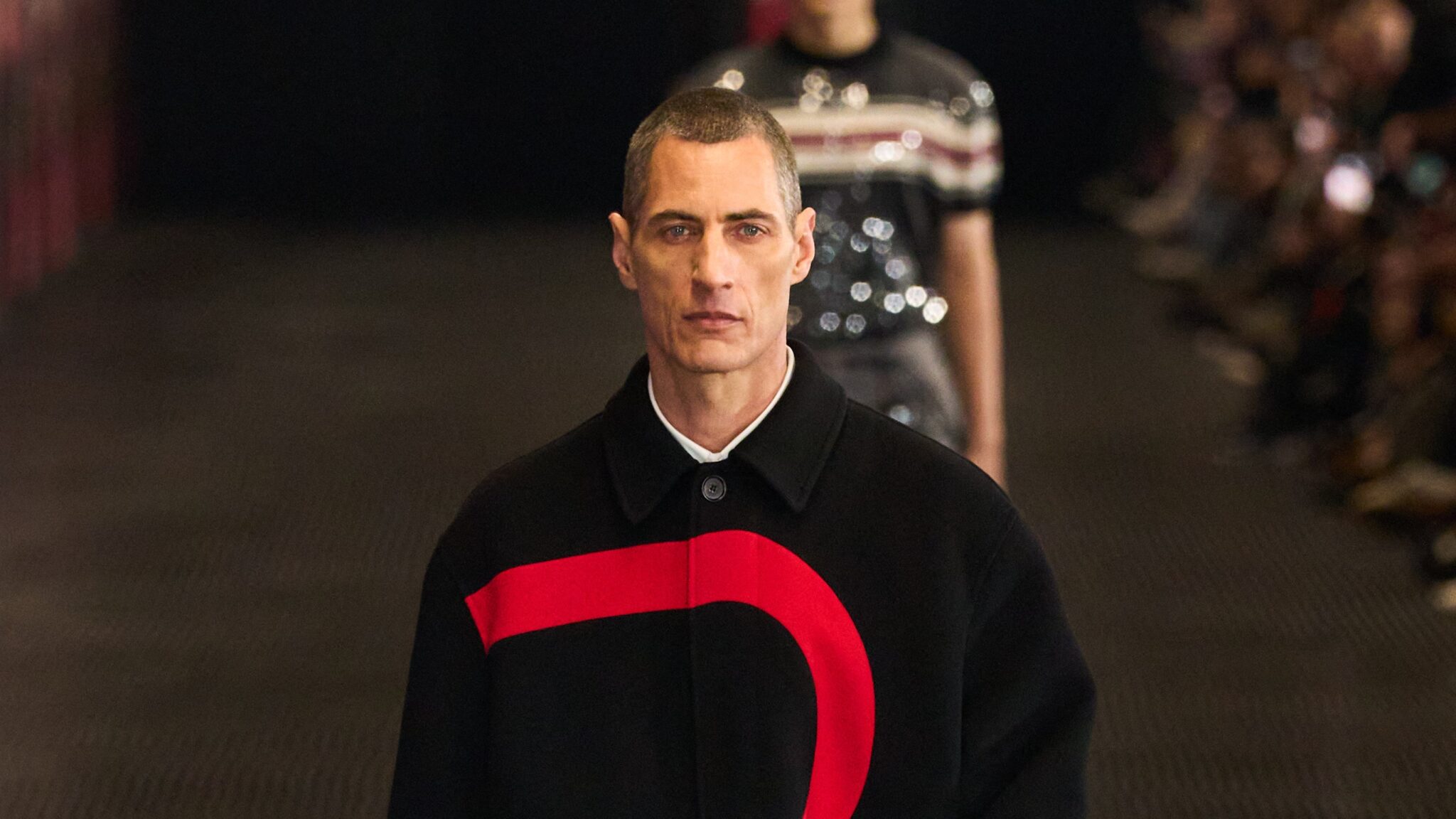You have to give Massimo Giorgetti credit for trying to give MSGM an edge and challenging himself to take the less-than-predictable route. Framing his shows in unlikely locations is part of the picture; after entrances in modernist buildings, theaters, city parks, bars and art galleries, this time he literally went underground and took over the Porta Venezia station of the Milan metro.
Giorgetti is keen to emphasize his connection with all things Milanese; this year the city’s subway is celebrating its 60th anniversary, which seemed like a good opportunity to associate MSGM with a celebrated example of 1960s Italian design finesse. The signage typography and tubular, curved handrails were created in 1964 by Franco Albini, one of the most elegant designers of the time, who put his stylish spin on an otherwise dreary architectural structure.
The curved shape of the handrails was adopted by Giorgetti as a decorative leitmotif, working with the Franco Albini Foundation to make this possible. It was pinned to a hoodie as a brooch or jacquarded to the front of a sleek black city coat; the special red shade served as a chromatic reference throughout the collection. The original prototype of the handrail was even carried as a kind of It bag by one of the models. Giorgetti likes to let his references do the talking. Showing in the subway also alluded to speed and speed, not always good companions in our hectic times.
Giorgetti never met a collaboration he didn’t like. In addition to the Franco Albini Foundation, this season he collaborated with Google (a first for the tech company) on graphics generated using a feature of the Pixel 8 phone and its AI-based camera; images of metro trains in full acceleration were converted into dazzling prints. Portuguese artist Tiago Alexandre was also involved; the images on his totemic artworks of motorcycle helmets were repeated here on a jacquard sweater and on a pair of shirts, tucked into classic flowing trousers or worn under a tailored blazer paired with wide-leg jeans.
By MSGM standards, the collection was concise and showed less indulgence in exuberant styling, without taking away from the optimistic atmosphere that reflects Giorgetti’s own attitude of open-mindedness and generosity. He’s not a philosopher or conceptual thinker, but he has a talent for tackling meaningful issues with a lightness of spirit that feels genuine. Regarding the slightly more mature feel of the collection, he acknowledged that the passage of time doesn’t exactly excite him, but at the same time makes him think about the transience of things and the crazy speed at which feelings, sensations, information and images are eroded. Yet the curiosity of his inner child still seems intact. Therefore, there was an abundance of sequins, feathers and glittering sweatshirts, briefs and jackets; some looks were paired with childish white socks and flat ballet flats, or with fluffy slippers. “Do we really have to go so fast?” he muttered backstage. Then he ran to get his bow.





